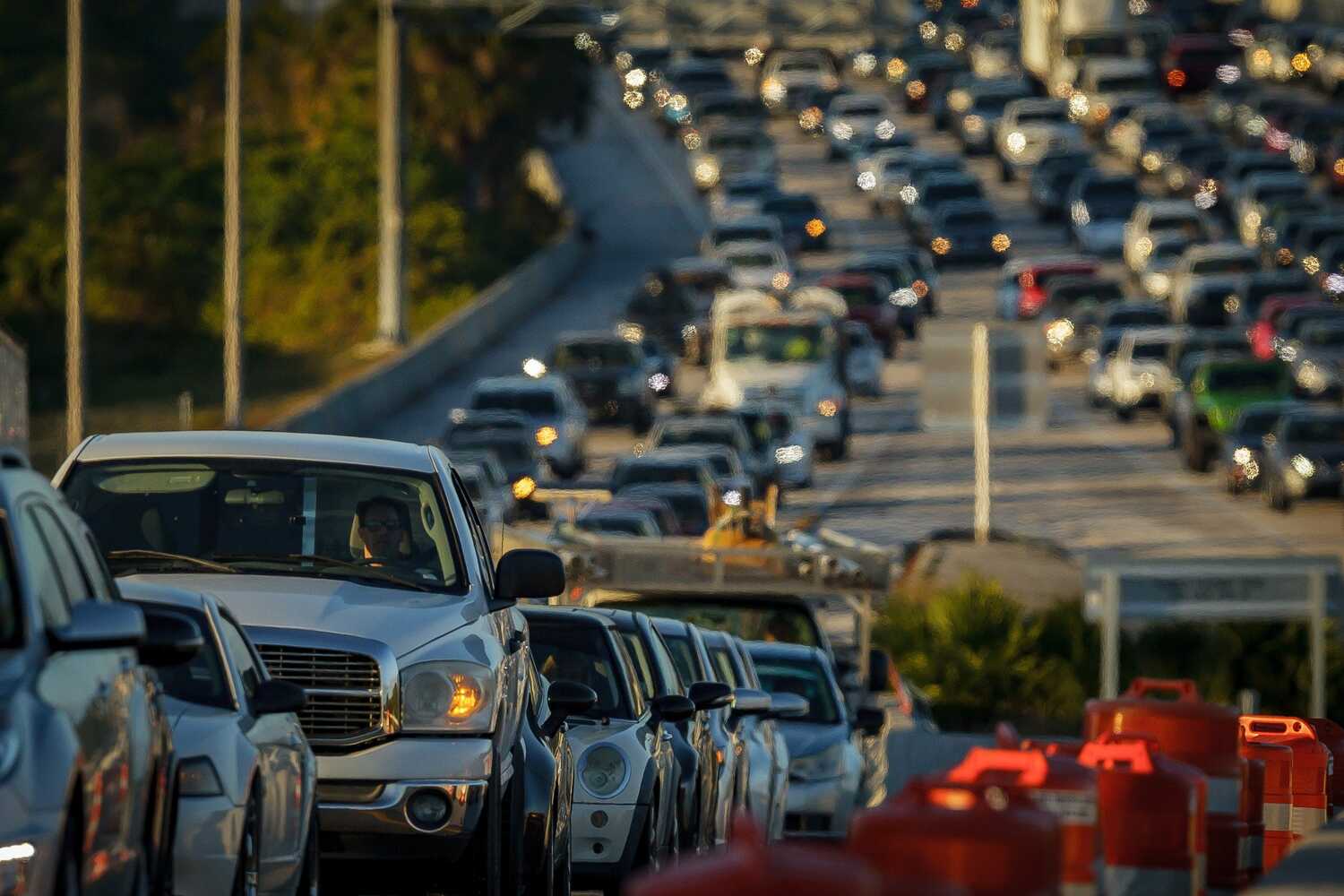by Bailey Schulz, USA Today

Planning to get away for a Fourth of July? Be prepared to share the road with a whole lot of other drivers.
With more than 47.7 million Americans expected to travel between July 1 and 5 for Independence Day, more than 91%, or 43.6 million travelers, will be hitting the roads this year. It’s the second-largest travel volume on record, even with commuting traffic still below pre-pandemic rates.
All those vehicles mean travel volumes are expected to jump 15% over normal, according to Bob Pishue, an analyst with transportation analytics company INRIX.
“Since Memorial Day, we’ve continued to see growth in the amount of people who are traveling,” Pishue said. “(At) almost every metro area that we looked at, we see (traffic) increases” during the upcoming holiday weekend.
Roads will be packed, in part, because many travelers are still avoiding other transportation options, which are more crowded and come with COVID restrictions like mask mandates.
So how can drivers be sure to avoid the worst bottlenecks? It's all about timing.
“Friday’s the largest spike, no surprise,” Pishue said. “From 1 to 3 p.m. in some areas and 3 to 5 p.m. in others, Friday is going to be the most congested day.”
Heat waves could also play a role in traffic volumes, with some travelers hitting the roads earlier or later to avoid high temperatures while in the car.
Pishue warned that return trips on Monday will face plenty of traffic as well.
“You can definitely expect to hit a few snags in those typical hotspots,” he said.
When should I hit the road for the Fourth?
These are the daily worst and best times to travel over the Fourth of July holiday, according to INRIX.
Thursday, July 1:
- Worst time: 3-5 p.m.
- Best time: After 7 p.m.
Friday, July 2:
- Worst time: 4-5 p.m.
- Best time: Before 12 p.m.
Saturday, July 3:
- Worst time: 11 a.m.-1 p.m.
- Best time: After 2 p.m.
Sunday, July 4: Road congestion not expected Sunday.
Monday, July 5:
- Worst time: 4-5 p.m.
- Best time: Before 1 p.m.
What are the worst corridors and times to travel?
These 10 cities are set to experience some of the heaviest Fourth of July traffic, according to INRIX.
Atlanta
- Worst corridor: I-75, Jodeco Road to Jenkinsburg Road
- Worst time: Friday from 1-3 p.m.
- Delay over normal: 50%
Boston:
- Worst corridor: I-95 South, MA-10 to Sanford Road
- Worst time: Monday, 3-5 p.m.
- Delay over normal: 330%
Chicago:
- Worst corridor: I-90 East, West Roosevelt Road to I-294
- Worst time: Friday, 4-6 p.m.
- Delay over normal: 50%
Detroit
- Worst corridor: I-75 North, 12 Mile Road to Oakland Street
- Worst time: Friday, 3-6 p.m.
- Delay over normal: 50%
Houston
- Worst corridor: I-10 West, Bernardo Road to Pin Oak Road
- Worst time: Saturday, 8-10 a.m.
- Delay over normal: 50%
Los Angeles
- Worst corridor: I-405 North, I-5 to Jefferson Blvd.
- Worst time: Friday 3-5 p.m.
- Delay over normal: 10%
New York
- Worst corridor: I-278 East, Bronx River to Williamsburg Street
- Worst time: Thursday, 3-5 p.m.
- Delay over normal: 30%
San Francisco
- Worst corridor: CA-17 North, Lark Ave to Mount Hermon Road
- Worst time: Monday, 6-8 p.m.
- Delay over normal: 340%
Seattle
- Worst corridor: I-5 South, Capitol Blvd (Olympia) to JBLM
- Worst time: Friday, 1-3 p.m.
- Delay over normal: 20%
Washington, D.C.
- Worst corridor: I-95 South, Route 3 to Dumfries
- Road Worst time: Thursday, 2-4 p.m.
- Delay over normal: 30%